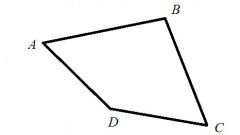Instruction
1
To calculate the perimeter given the area and width of a polygon, you need to know to know the type of the polygon. The parameters "length" and "width" usually apply to characteristics of the rectangle. A rectangle is a quadrilateral with right angles and pairwise equal sides.
2
Determine the length of the rectangle. To do this, divide the given condition in the area by the width.
3
The perimeter of a rectangle calculate by the formula P=2L+2S,where P — the desired perimeter; S is the specified in the condition width; L is the length calculated in step 2.
4
A special case of a rectangle — a square. All four sides of a square are equal. Therefore, to calculate the perimeter it is enough to know the size of one side. Calculate the perimeter of a square the formula P=4S,where P — the desired perimeter; S is the specified in the condition of width.
5
A parallelogram is also a regular polygon. Side are equal and parallel. To calculate the size of the sides of a parallelogram on the known area and the other side is impossible. You need to know the angle between the sides of the parallelogram. Given conditions sufficient to calculate the perimeter of a parallelogram.
6
Draw an arbitrary parallelogram. On the side with well-known condition size lower the height of the vertices of a parallelogram. When specified the width and height of the parallelogram — magnitude constant and equal to the quotient from dividing the square of the width. The angle between the sides of the parallelogram condition is not specified. When changing the angle will change the size of an unknown side of a parallelogram. Thus the problem has many solutions.




